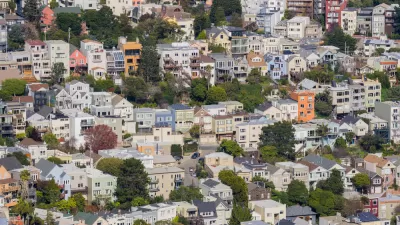While it’s too soon to assess the full effects of recently passed legislation on housing production in the state, planners and housing advocates express cautious optimism that the new laws could help alleviate the state’s housing shortage.

“Since 2017, the State of California has adopted over 100 new laws designed to increase housing production,” according to a brief by William Fulton, David Garcia, Ben Metcalf, Carolina Reid, and Truman Braslaw from the Terner Center for Housing Innovation at UC Berkeley. The laws have an impact on four stages of the building process: planning, zoning, permitting, and building. The authors make “an effort to characterize the breadth and goals of recent legislation, and to assess practitioner experiences with using these laws to further housing production” in the state and provide “an overview of California’s housing system, catalogs recent housing legislation, and summarizes themes from interviews with stakeholders across the state.”
While the authors warn that “It is too early to know whether the full set of new state laws is having a meaningful impact on spurring increased homebuilding,” there have nevertheless been “positive, measurable impacts on construction starts within some specific housing domains, and interviewees expressed optimism that process changes could unlock significant increases in home-building in the future.”
The brief highlights optimistic developments in three areas: growing support for ADUs and subsidized affordable housing; a shift in culture around project approvals; and changes in California’s Regional Housing Needs Assessment (RHNA) and Housing Element law, which are spurring—despite much local opposition—zoning changes around the state.
FULL STORY: New Pathways to Encourage Housing Production: A Review of California’s Recent Housing Legislation

Alabama: Trump Terminates Settlements for Black Communities Harmed By Raw Sewage
Trump deemed the landmark civil rights agreement “illegal DEI and environmental justice policy.”

Planetizen Federal Action Tracker
A weekly monitor of how Trump’s orders and actions are impacting planners and planning in America.

The 120 Year Old Tiny Home Villages That Sheltered San Francisco’s Earthquake Refugees
More than a century ago, San Francisco mobilized to house thousands of residents displaced by the 1906 earthquake. Could their strategy offer a model for the present?

LA’s Tree Emergency Goes Beyond Vandalism
After a vandal destroyed dozens of downtown LA trees, Mayor Karen Bass vowed to replace them. Days later, she slashed the city’s tree budget.

Sacramento Leads Nation With Bus-Mounted Bike Lane Enforcement Cameras
The city is the first to use its bus-mounted traffic enforcement system to cite drivers who park or drive in bike lanes.

Seattle Voters Approve Social Housing Referendum
Voters approved a corporate tax to fund the city’s housing authority despite an opposition campaign funded by Amazon and Microsoft.
Urban Design for Planners 1: Software Tools
This six-course series explores essential urban design concepts using open source software and equips planners with the tools they need to participate fully in the urban design process.
Planning for Universal Design
Learn the tools for implementing Universal Design in planning regulations.
Ada County Highway District
Clanton & Associates, Inc.
Jessamine County Fiscal Court
Institute for Housing and Urban Development Studies (IHS)
City of Grandview
Harvard GSD Executive Education
Toledo-Lucas County Plan Commissions
Salt Lake City
NYU Wagner Graduate School of Public Service





























